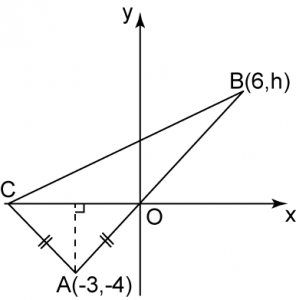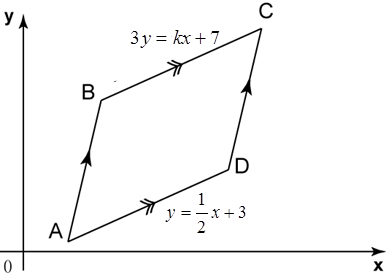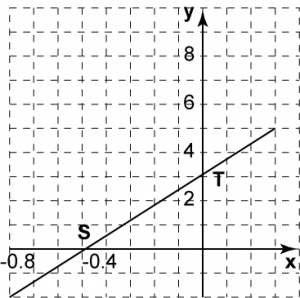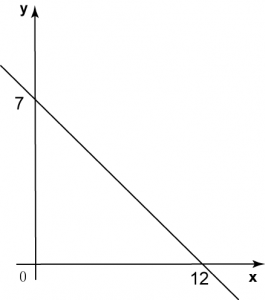Question 5:

Solution:
(a)
(b)
(c)

In the diagram above, a straight line 5x + 7y + 35 = 0 intersects with the x-axis and y-axis at R and S respectively. Determine
(a) the gradient of the straight line RS.
(b) the x-intercept of the straight line RS.
(c) the distance of RS.
(a)
(b)
(c)
Question 6:
 Solution:
Solution:
(a)
(b)
(c)

In the diagram above, O is the origin of the Cartesian plane, AOB is a straight line and OA = AC. Find
(a) the coordinates of C.
(b) the value of h.
(c) the equation of BC.
(a)
x-coordinate of C = –3 × 2 = –6
Therefore coordinates of C = (–6, 0).
(b)
(c)













